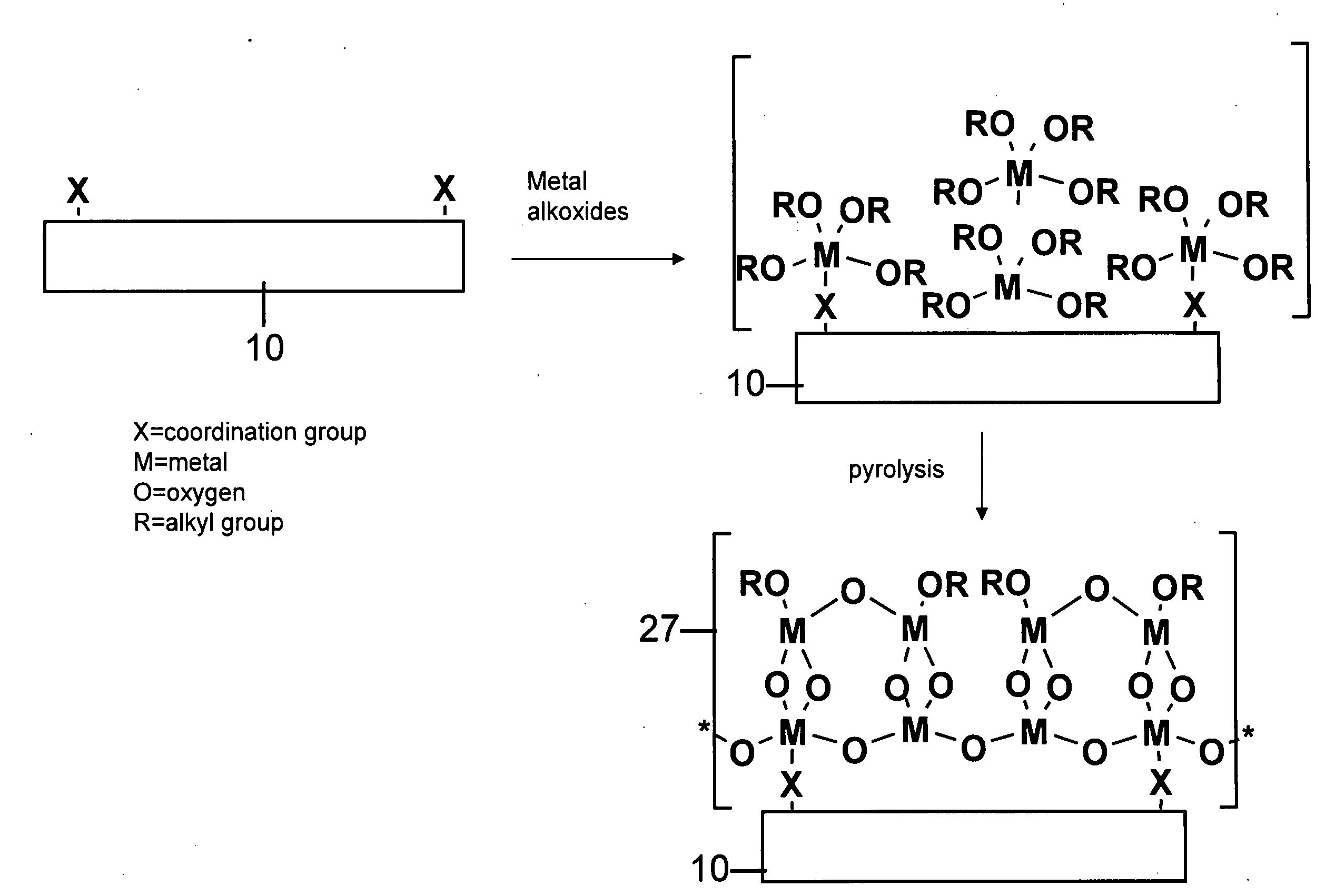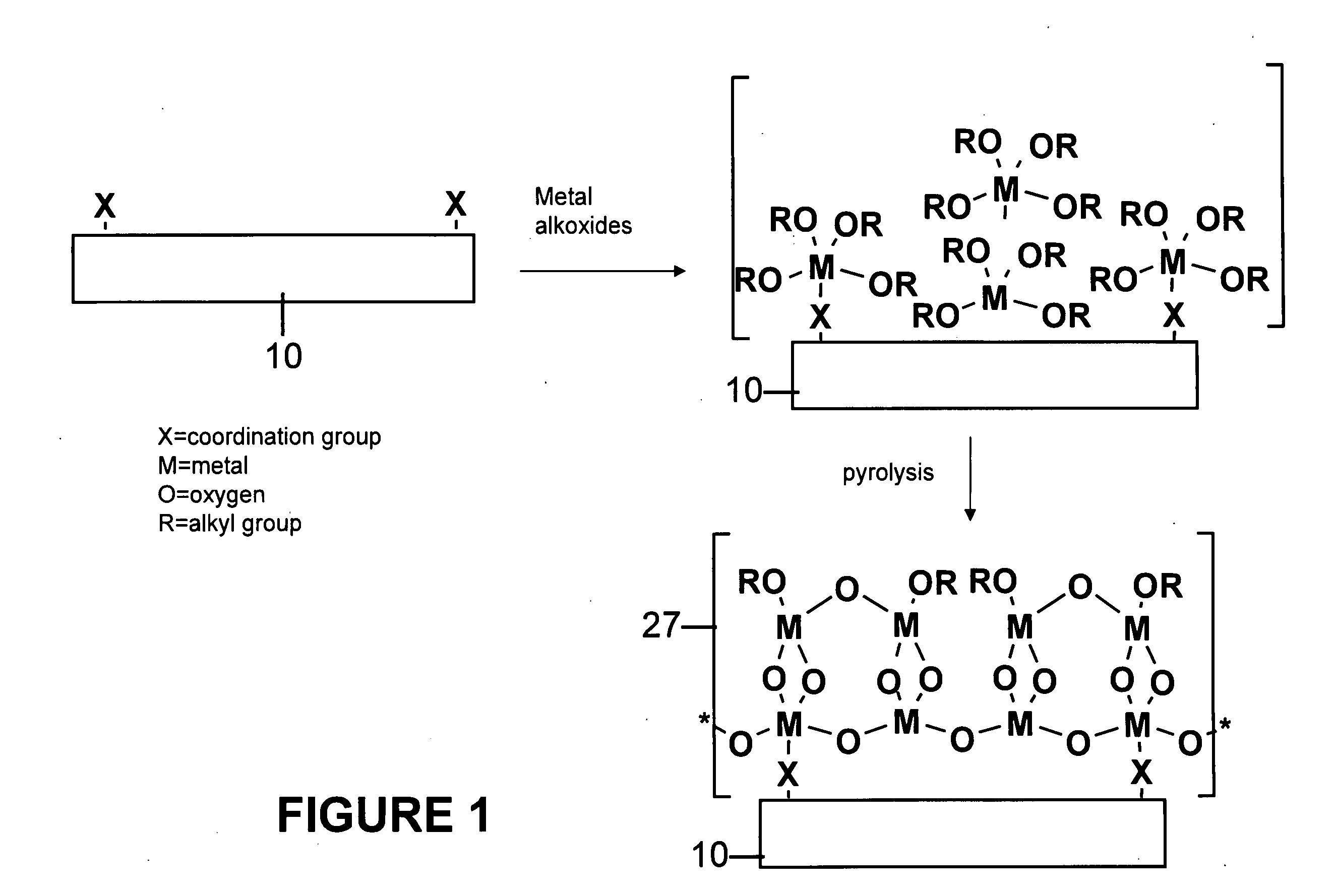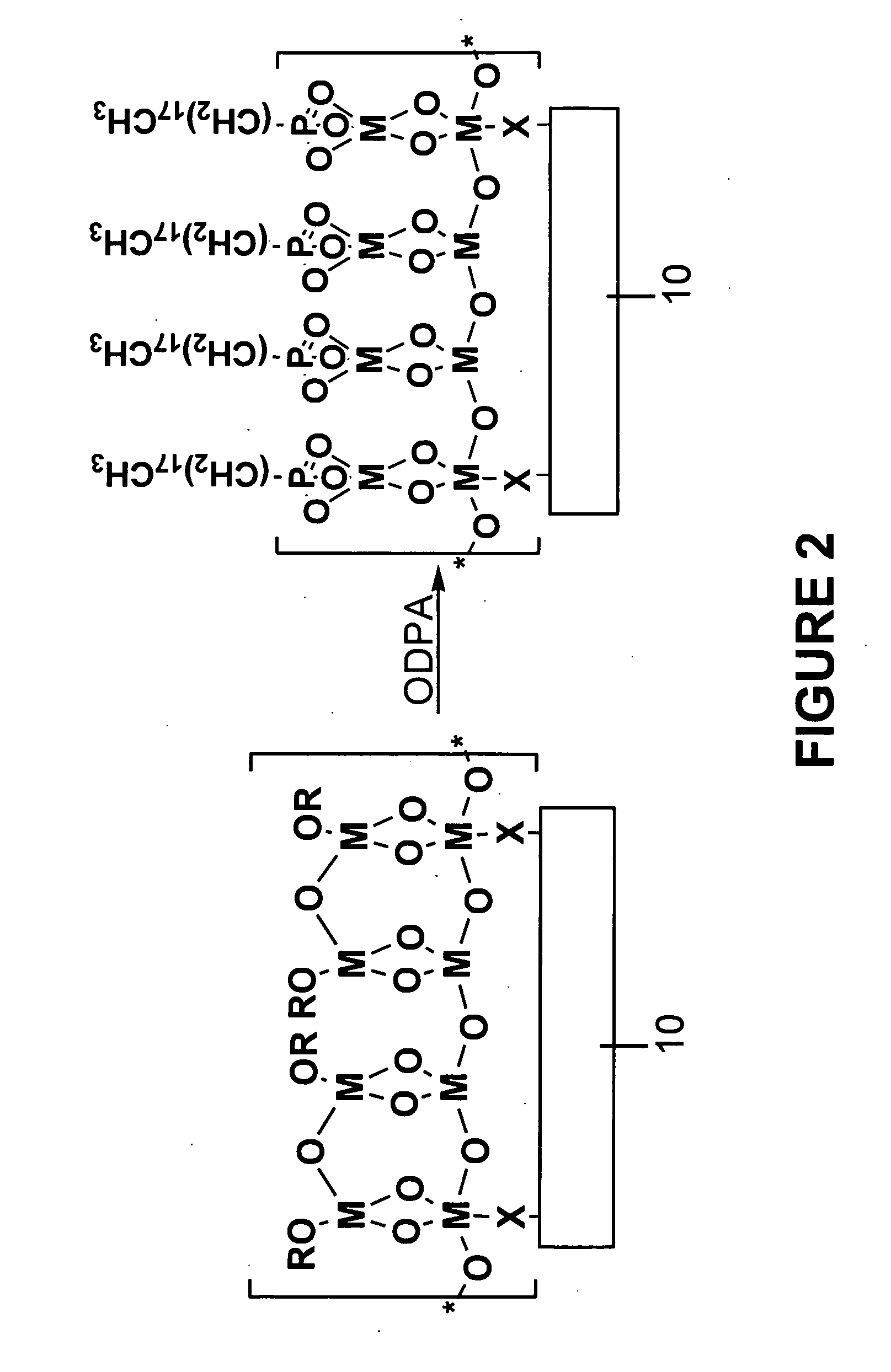Functionalized substrates and methods of making same
- Summary
- Abstract
- Description
- Claims
- Application Information
AI Technical Summary
Benefits of technology
Problems solved by technology
Method used
Image
Examples
example 1
Formation of a Zirconia Thin Film on Polymer Substrate
[0056]All reagents were obtained from Aldrich and were used as received unless otherwise noted. PET, PEEK, and nylon 6 / 6 were obtained from Goodfellow, Inc. Acetonitrile was dried over CaH2; and tetrahydrofuran (THF) was dried over KOH overnight. Both were distilled prior to use. Surface modified samples were analyzed using a Midac M25 10C interferometer equipped with a surface optics SOC4000 SH specular reflectance head attachment. Fluorimetry experiments utilized a Photon Technology International Fluorescence Spectrometer.
[0057]Polymer substrates (nylon 6 / 6, PET or PEEK) were placed in a deposition chamber equipped with two stopcocks for exposure either to vacuum or to the vapor of zirconium tetra(tert-butoxide). The chamber was evacuated at 10−3 torr for 1 hour and polymer slides were exposed to vapor of zirconium tetra(tert-butoxide) (with external evacuation) for 1 minute followed by 5 minutes exposure without external evacu...
example 2
Reaction of Phosphonic Acid with Activated Polymers
[0059]Activated polymers produced in Example 1 were placed in a 0. 1 mM solution of octadecylphosphonic acid (ODPA) in THF for 1 hour, giving phosphonate-bound polymer surfaces (with reference to FIG. 2, where M=Zr, and R==tert-butyl). Phosphonate-derivatized surfaces are effective at binding bio- or other classes of molecules.
Example 3
Metallization of Activated Polymers
[0060]Activated polymers produced in Example 1 were treated with an aqueous solution of a copper salt, which was absorbed onto the zirconium oxide adhesion layer. Treatment with either sodium borohydride or an amine borane gave a copper-coated polymer (with reference to FIG. 3, where M=Zr, and R=tert-butyl). Electron dispersive X-ray based analysis showed the presence of both copper and zirconium.
example 2a
Reaction of Carboxylic Acid with Activated Polymers
[0061]Activated PLGA polymer produced in Example 1 was placed in a 0. 1 mM solution of maleimidopropionic acid acid in ethanol for 30 min, giving the maleimidocarboxlyate-bound polymer surface (with reference to FIG. 10, where M=Zr) to give 29. This derivatized surface is effective at binding bio- or other classes of molecules (30a and 30b).
PUM
| Property | Measurement | Unit |
|---|---|---|
| Melting point | aaaaa | aaaaa |
| Dielectric polarization enthalpy | aaaaa | aaaaa |
| Composition | aaaaa | aaaaa |
Abstract
Description
Claims
Application Information
 Login to View More
Login to View More - R&D
- Intellectual Property
- Life Sciences
- Materials
- Tech Scout
- Unparalleled Data Quality
- Higher Quality Content
- 60% Fewer Hallucinations
Browse by: Latest US Patents, China's latest patents, Technical Efficacy Thesaurus, Application Domain, Technology Topic, Popular Technical Reports.
© 2025 PatSnap. All rights reserved.Legal|Privacy policy|Modern Slavery Act Transparency Statement|Sitemap|About US| Contact US: help@patsnap.com



